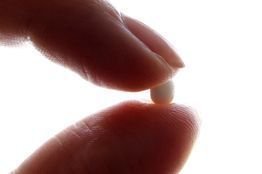
Tokyo: In collaboration with the Institute for Frontier Medical Sciences at Kyoto University, a team of CiRA researchers have designed a model that reprograms fibroblasts to the early stages of their differentiation into intact muscle cells.
Duchenne muscular dystrophy (DMD) is a muscular disease that shows symptoms in early childhood and causes progressive atrophy and eventual death. There is little in terms of treatment, partly because of poor understanding of how DMD develops, although it is known that abnormal expression of the protein dystrophin is at fault.
Normally, to study DMD development, patient muscles, the cells that develop into muscle cells, are used to study DMD development. However, because patients suffer from variable stages of DMD, their cells are not suitable for studying the early stages of DMD development and preventative measures.
To overcome this problem, Hidetoshi Sakurai, Senior Lecturer at CiRA, and his team, in collaboration with the Institute for Frontier Medical Sciences at Kyoto University, has designed a model that reprograms fibroblasts to the early stages of their differentiation into intact muscle cells.
The strategy depends on first reprogramming the patient cells to induced pluripotent stem (iPS) cells and then introducing a gene that differentiates the iPS cells to muscle cells. "Our model allows us to use the same genetic background to study the early stage of pathogenesis which was not possible in the past," said CiRA researcher Emi Shoji, the first author of a study published in Scientific Reports that gives new insights on DMD development.
Muscle contraction depends on an influx of calcium (Ca2+) ions into the cells. However, too much influx leads to ell dysfunction or death, which is believed to be the underlying cause of DMD. "It is critical to assess intact cells for an accurate evaluation how Ca2+ influx leads to DMD pathogenic cascades," said Shoji.
She therefore stimulated their model electrically to simulate muscle cell contraction, finding that cells from DMD patients had significantly increased influx. Further, study laid blame on transient receptor potential (TRP) channels through which the Ca2+ ions enter the cell. This observation is consistent with other models and provides a clear drug target for the treatment of DMD.
More important, it should allow scientists to uncover drug agents that can counter DMD at early development. "TRP channels have been identified before. But because our model uses patient-derived hiPS cells, there is a potential that we can find new drugs for DMD," said Sakurai.




